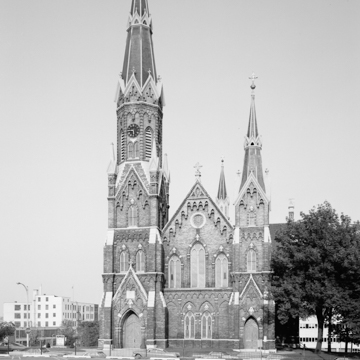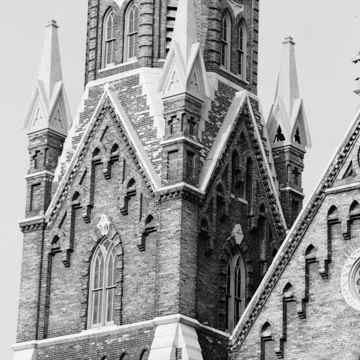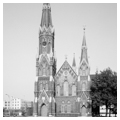With its impressive brickwork and stone trim outside, and its ornate woodwork inside, Trinity was heralded in 1890 as the “finest church edifice within the Missouri Synod” by the Lutheran Witness, the official periodical of the synod itself. Trinity’s cream brick exterior is trimmed with sandstone and sheet metal. Gothic Revival detailing is everywhere: in the doors and windows, lancet window tracery, pointed-arch corbeling, and the towers, the grilles, and the decorative fleche. Sandstone highlights the copings of wall and tower buttresses and embellishes the windows in quoins and keystones. Two towers of uneven height dominate the facade.
Trinity’s interior features elaborate wood-work, again emphasizing pointed arches in the windows and many of the furnishings. The pulpit rests atop a huge goblet, connected to the chancel by an elegant, curving stair-way carved with pointed-arch forms. Trinity’s faceted spires reappear in the pinnacles of the sounding board that caps this beautiful display of woodworking. The design may have been borrowed from a similar pulpit in Germany’s Wartburg Chapel, where Martin Luther took refuge in the sixteenth century.





